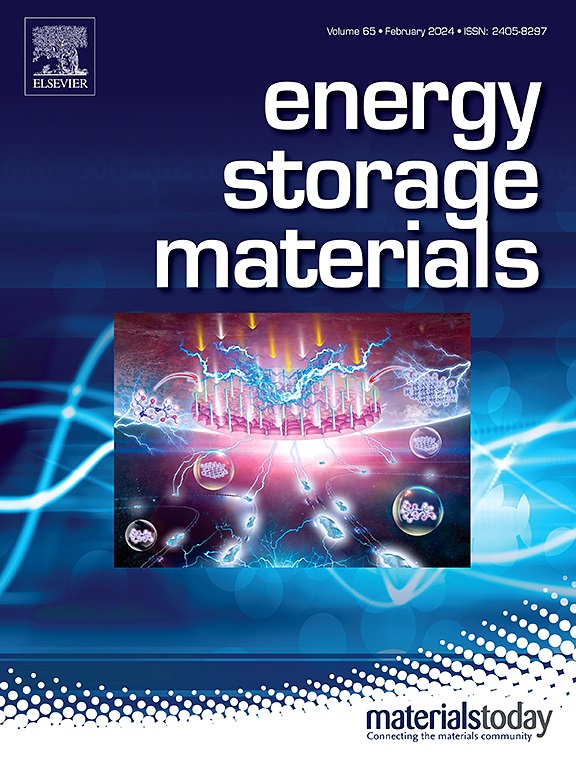Bio-inspired biomass hydrogel interface with ion-selective responsive sieving mechanism for corrosion-resistant and dendrite-free zinc-iodine batteries
IF 18.9
1区 材料科学
Q1 CHEMISTRY, PHYSICAL
引用次数: 0
Abstract
Aqueous zinc-iodine (Zn-I2) batteries are considered a promising contender for grid energy storage, but their practical application is hindered by such problems as the grievous polyiodide shuttle, parasitic corrosion and Zn dendrite growth. Herein, an immune cell-inspired biomass hydrogel interfacial layer composed of carboxymethyl chitosan/sodium alginate (CCS/SA) is constructed on the Zn anode by an in-situ gelation strategy, which exhibits the enhanced cycling stability of Zn-I2 batteries. The multifunctional CCS/SA hydrogel interface with a unique ion-selective responsive sieving mechanism acts as a pre-interception layer to block polyiodide ions but favors Zn2+ ion transfer and nucleation behavior. Furthermore, the hydrogen bond networks of water are perturbed with the CCS/SA layer, thereby restraining the activity of water molecules and alleviating the detrimental Zn corrosion. As a result, the Zn-I2 battery with a CCS/SA-Zn anode achieves an ultra-long cycle life of 60,000 cycles at 5 A g−1, superior to bare Zn-based cells and the state-of-the-art batteries ever reported. This work demonstrates the important role of the bio-inspired multifunctional biomass hydrogel interface developed for zinc-ion batteries and provides in-depth insight into the engineering strategy to promote the actual application of Zn-I2 batteries.
求助全文
约1分钟内获得全文
求助全文
来源期刊

Energy Storage Materials
Materials Science-General Materials Science
CiteScore
33.00
自引率
5.90%
发文量
652
审稿时长
27 days
期刊介绍:
Energy Storage Materials is a global interdisciplinary journal dedicated to sharing scientific and technological advancements in materials and devices for advanced energy storage and related energy conversion, such as in metal-O2 batteries. The journal features comprehensive research articles, including full papers and short communications, as well as authoritative feature articles and reviews by leading experts in the field.
Energy Storage Materials covers a wide range of topics, including the synthesis, fabrication, structure, properties, performance, and technological applications of energy storage materials. Additionally, the journal explores strategies, policies, and developments in the field of energy storage materials and devices for sustainable energy.
Published papers are selected based on their scientific and technological significance, their ability to provide valuable new knowledge, and their relevance to the international research community.
 求助内容:
求助内容: 应助结果提醒方式:
应助结果提醒方式:


